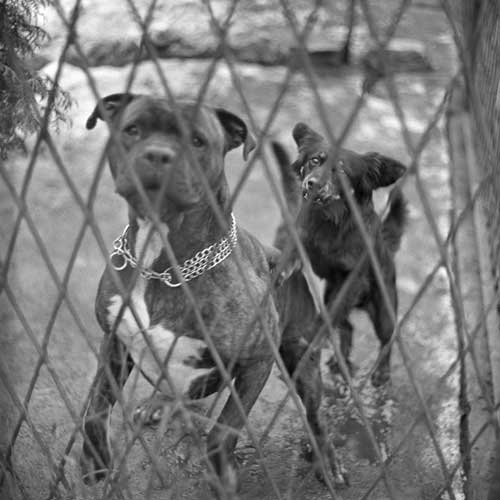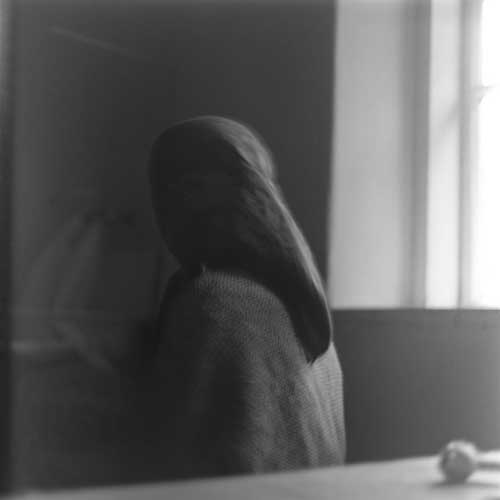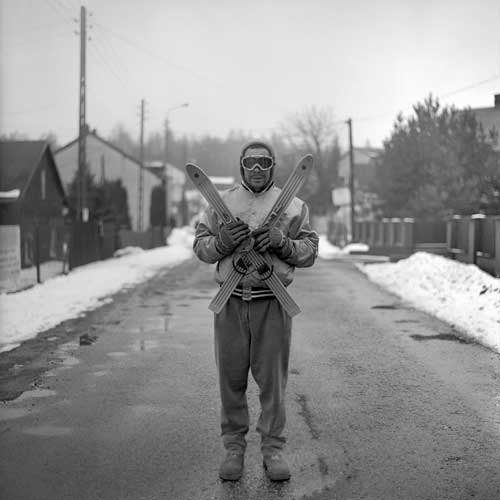 |
 |
 |
 |
 |
 |
 |
| „Rura” to naziemny, kilkukilometrowy, ogromnych rozmiarów taśmociąg, którego bieg zaczyna się przy stacji przeładunkowej rudy żelaza, a kończy się na terenie Huty Katowice. Przecina lasy, drogi, biegnie ponad polami, wreszcie na krótkim odcinku przebiega ponad małym miasteczkiem, którego nazwę trudno wymówić i zapamiętać. Biegnąc wśród pól i lasów, przypomina rzymski akwedukt, z tą różnicą, że nieustannie trzęsie się, huczy i buczy. A od tego buczenia w Strzemieszycach Małych pękają ściany w domach. Kiedyś było tu całkiem inaczej. Były uprawne pola i pełne zwierząt zagrody. Byli ludzie, którzy żyli w ciszy. Potem pojawił się kombinat i otaczający go zgodnie z przepisami las. Nieco później dorzucono jeszcze potężne zakłady utylizacji odpadów komunalnych, spalarnie odpadów medycznych i ubojnię drobiu. To miejsce skrajnie nieprzyjazne dla człowieka, nie tylko krajobraz, ale również powietrze, gleba i woda. Jak w rozbitym lustrze dostrzegasz wiele zdeformowanych obiektów w zdegradowanym krajobrazie. W miejscu, gdzie nawet drzewa przybierają dziwny kształt, zaczynasz wierzyć w opowieść, że żył tu kot o dwóch głowach. Trzask zamykanych drzwi, ujadające, spuszczone psy – to jeden z wielu sygnałów, które podpowiadają Ci, że powinieneś opuścić to miejsce. To z jednej strony przyzwolenie na brud, walające się śmieci i otaczający fetor, ale także ludzie, którzy pośród tego wszystkiego chcą uprawiać brzoskwinie lub prowadzić zwierzyniec z egzotycznymi zwierzętami. Okazuje się, że można tam także żyć dobrze i mieć niezmąconą pogodę ducha. Jak ujął to jeden z mieszkańców: „Tylko te kominy dookoła. Ale dobrze mi tu. Ja sobie zrobiłem ogródek, w głowie. I mam teraz taki spokój!” Miasteczko pod rurą to niekończący się zbiór opowieści. Opowieści o intrygującym przywiązaniu do miejsca i do siebie nawzajem. |
| Rura is a gigantic steel structure that was made to transport iron ore from a railway hub to the major steelworks in a heavily industrialized region in southern Poland. It overpasses a forest, roads, fields and finally, for a short distance, it runs above a small town, the name of which is difficult to pronounce and remember. The structure resembles an antique Roman aqueduct, the difference being that it constantly shakes, rumbles and booms. And caused by this humming there are scratches on the walls of houses in Strzemieszyce. But once it used to be a totally different place. There had been farmlands and homesteads full of animals. There had been people who used to live in a peaceful surrounding. Then, a steel plant was built and further heavy industrial sites such as a coke plant, incineration plant and landfill site soon followed. Now, it is a place hostile to humans where not only the landscape but also air, soil and water have been poisoned. As in a broken mirror, you notice many deformed objects in this degraded landscape. In a place where even the trees take on a strange shape, you start to believe in the story of a two-headed cat that lived somewhere around. A sound of slamming doors and barking dogs are one of many signs that suggest you had better leave this place. It is on one hand a passive consent to pervasive dirt, garbage and stench, but on the other hand there are people who, among all that, still want to grow peaches or breed a menagerie of exotic animals. It turns out that one can also live well and enjoy undisturbed serenity. “Just these chimneys around. But I’m fine here. I have made myself a little garden in here, in my head. And I am at peace now”. This little village under the Pipe is a never-ending collection of tales. Tales of intriguing attachment to place and to each other. |
 |
Copyright ©2015 Galeria FF ŁDK i Autorzy |